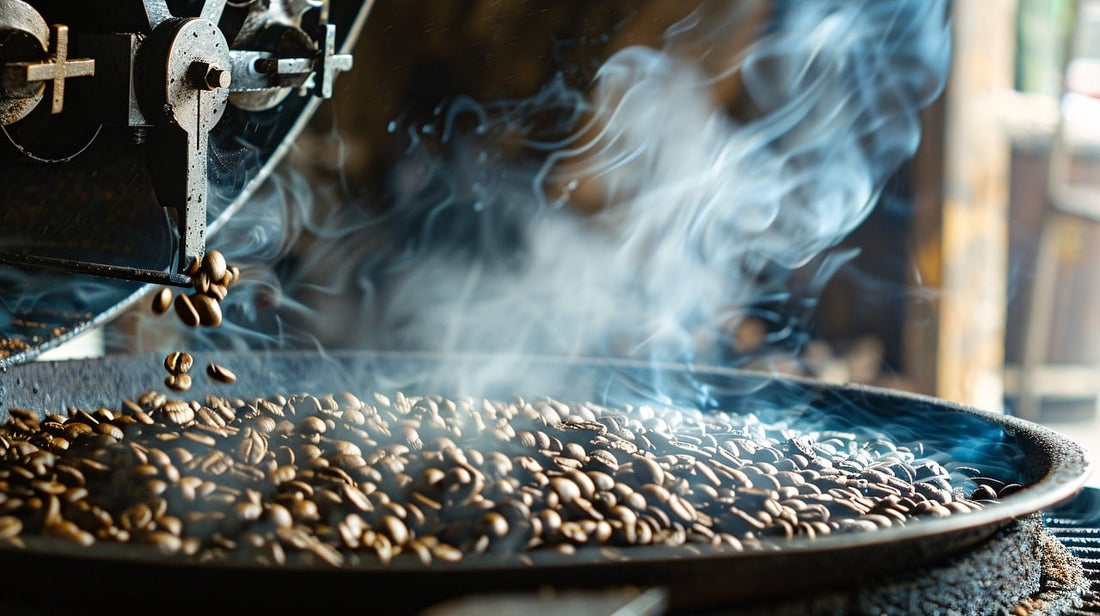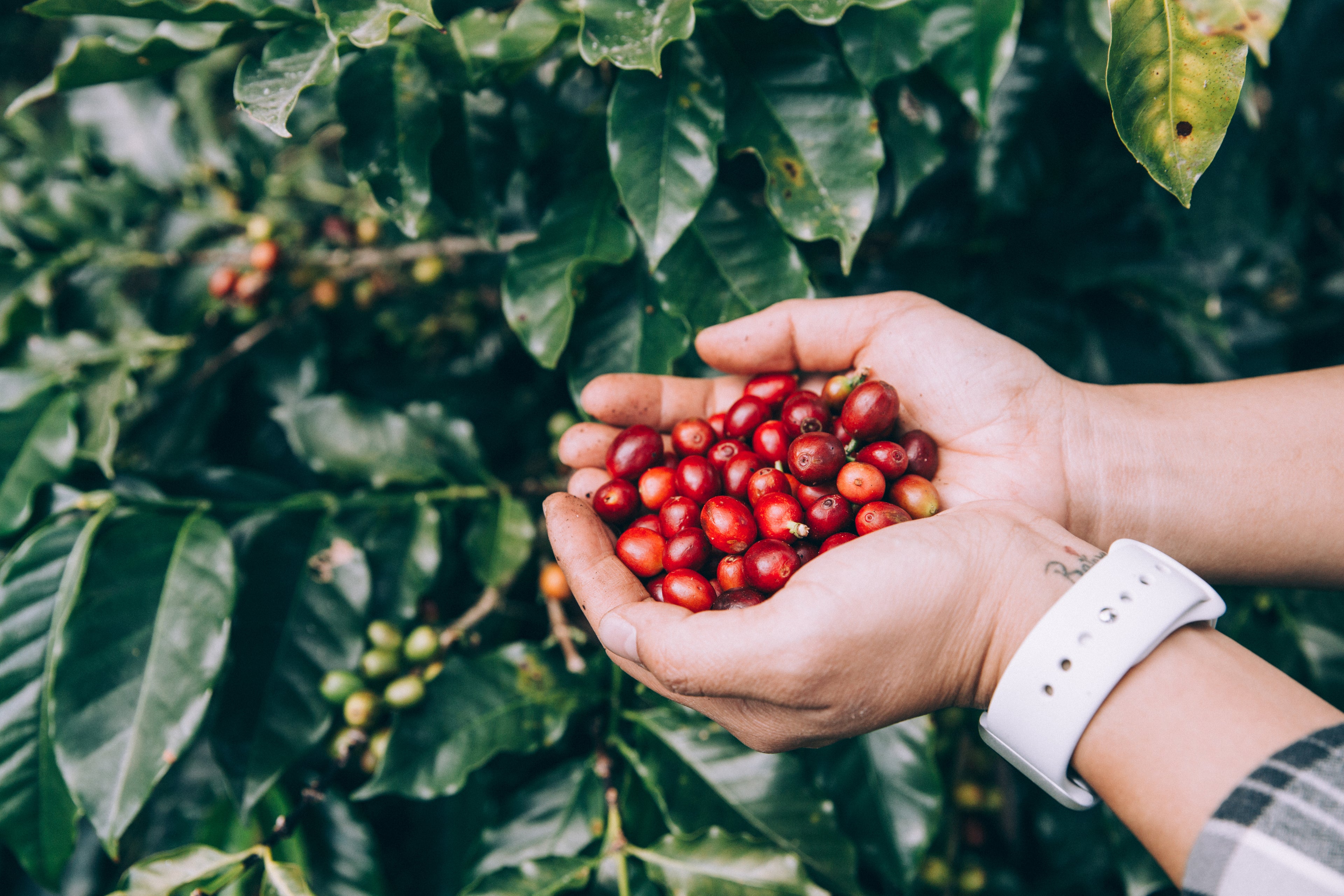
The Roasting Process: How It Affects the Flavor of Your Coffee
Roasting coffee is a crucial stage in the journey to the perfect cup. From green beans to the rich infusion in your cup, every phase of roasting significantly influences the taste, aroma, and overall quality of your coffee. In this article, we'll immerse our senses in the fascinating world of coffee roasting, exploring the different roasting levels and their flavor profiles, the roasting process step by step, and how to choose the right roast level to satisfy your individual preferences.
Different Roast Levels and Their Flavor Profiles
Roasting coffee is an art that unfolds through heat, time, and the roaster's experience. Each roast level produces a unique flavor profile, from smooth and delicate tones to intense and bold flavors.
- Light Roast: This roast level is characterized by preserving much of the coffee's natural characteristics. Lightly roasted beans exhibit bright acidity and fruity and floral notes. These subtle notes are most evident in single-origin coffees, where the coffee's natural flavors are expressed most clearly. Light roasts are ideal for those seeking a more delicate and complex sensory experience.
- Medium Roast: With a medium roast, beans begin to develop more balanced flavors and body. Here, notes of caramel, chocolate, and nuts emerge, providing a richer and more satisfying sensory experience. This roast level is popular among those who enjoy a full-bodied coffee with moderate acidity, without compromising the complexity of the coffee's natural flavors.
- Dark Roast: Darkly roasted beans offer a bolder and robust experience. With a more intense flavor, these varieties exhibit notes of dark chocolate, spices, and a slight bitterness. Dark roast is characteristic of Italian espresso and is appreciated for its full body and strong, smoky flavor. However, it's important to note that dark roasting can mask the coffee's natural flavors and produce a more uniform flavor profile.
Step-by-Step Roasting Process
The roasting process is a delicate dance between science and art, where each stage influences the final outcome. Below, we describe the key phases of coffee roasting:
- Bean Preparation: Before roasting, coffee beans undergo careful selection and cleaning to ensure quality and flavor consistency. Expert roasters select high-quality beans from various coffee-producing regions, ensuring that each batch of coffee has a unique and distinctive flavor profile.
- Loading into the Roaster: Beans are loaded into the roaster, where they are exposed to intense heat and airflow. The roaster carefully controls temperature and roasting time to ensure that the beans are roasted evenly and desired flavors develop. During this process, beans lose moisture and increase in size, contributing to the formation of characteristic roasted coffee flavors.
- First Crack: During this stage, beans begin to expand and release steam, producing a characteristic sound similar to popcorn. This phenomenon, known as "first crack," indicates that the beans have reached an initial level of roasting and have started to develop complex flavors and captivating aromas.
- Color and Aroma Development: As the process progresses, beans change color, developing golden hues and captivating aromas that permeate the environment. The roaster closely monitors bean color and aroma to determine the optimal time to stop the roasting process, ensuring quality and consistency of the final coffee.
- Second Crack (Optional): Some roasters opt for a second crack, which produces a darker roast and more pronounced flavor. During this stage, beans become more fragile and begin to release natural oils, contributing to a more intense flavor and fuller body in the final cup. However, it's important to note that the second crack can also result in a bitter and smoky flavor, so it's essential to carefully balance roasting time and temperature.
- Cooling and Resting: Once beans have reached the desired roast level, they are quickly cooled to stop the roasting process and avoid over-extraction. Roasted beans are transferred to a cooler, where they are aerated and cooled before being packaged and sealed. After cooling, roasted beans are allowed to rest for a period of time to allow flavors to fully develop and stabilize. This resting period is crucial to ensure the freshness and quality of the final coffee, as it allows flavors to integrate and harmonize, resulting in a smooth and balanced cup of coffee.
How to Choose the Right Roast Level for Your Taste
Choosing the right roast level is a matter of personal preference and depends on a variety of factors, including individual taste, brewing method, and occasion of consumption. Here are some tips to help you find your perfect roast:
- Experiment with Different Roast Levels: Try a variety of light, medium, and dark roasts to discover your personal preferences. Keep a record of your experiences and observe how each roast level affects the taste, aroma, and overall coffee experience.
- Consider the Brewing Method: The coffee brewing method can influence the roast level that best suits your preferences. For example, light roasts often work well in brewing methods like pour-over and French press, as they highlight the coffee's floral and fruity notes. On the other hand, dark roasts are often more suitable for concentrated brewing methods like espresso, where their bold flavor and full body can shine.
- Look for Freshness: Regardless of the roast level you choose, it's important to look for freshly roasted coffee to enjoy the best flavors and aromas. Freshly roasted coffee retains its freshness and vitality, resulting in a more satisfying tasting experience. Look for local roasters that offer freshly roasted coffee and inquire about the roast date to ensure you're getting a quality product.
- Consider Coffee Origin: In addition to roast level, coffee origin can also influence its flavor and flavor profile. Different coffee-producing regions produce beans with unique flavor profiles, ranging from fruity and floral notes to earthy and spicy flavors. Experiment with coffees from different origins to discover the complexities and nuances each region has to offer.
- Adjust Roasting to Your Taste: If you have the opportunity, talk to your local roaster about your flavor and aroma preferences. Many roasters offer customized roasting options that allow you to adjust the roast level to your individual tastes. Whether you prefer a light and bright roast or a dark and robust roast, an experienced roaster can help you find the perfect balance for your palate
In conclusion, the coffee roasting process is a fundamental part of creating the perfect cup. Understanding the different flavor profiles, the step-by-step roasting process, and choosing the right roast level will help you appreciate your favorite specialty coffee even more. Continue to explore and experiment with different roasts to discover the flavors and aromas you enjoy most, and enjoy the sensory journey that each cup of coffee offers.


